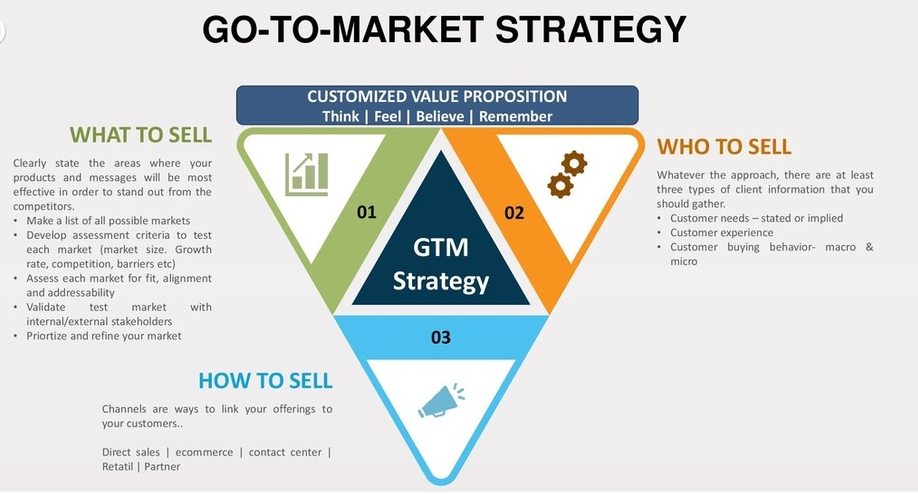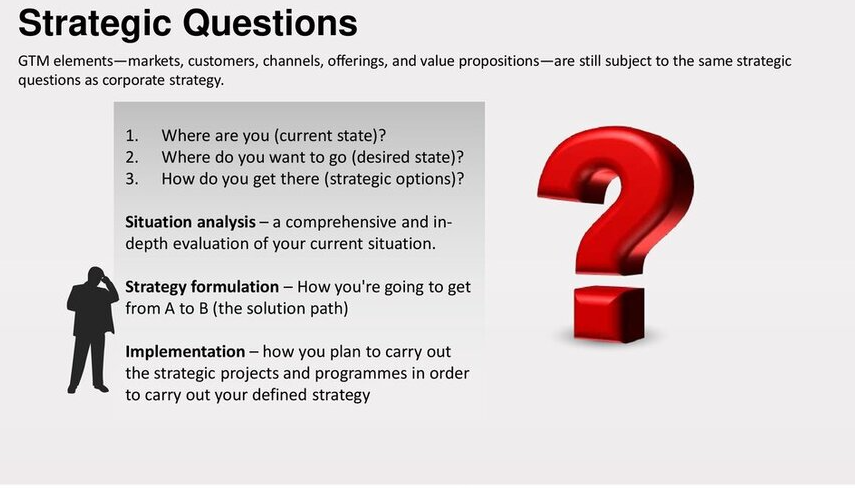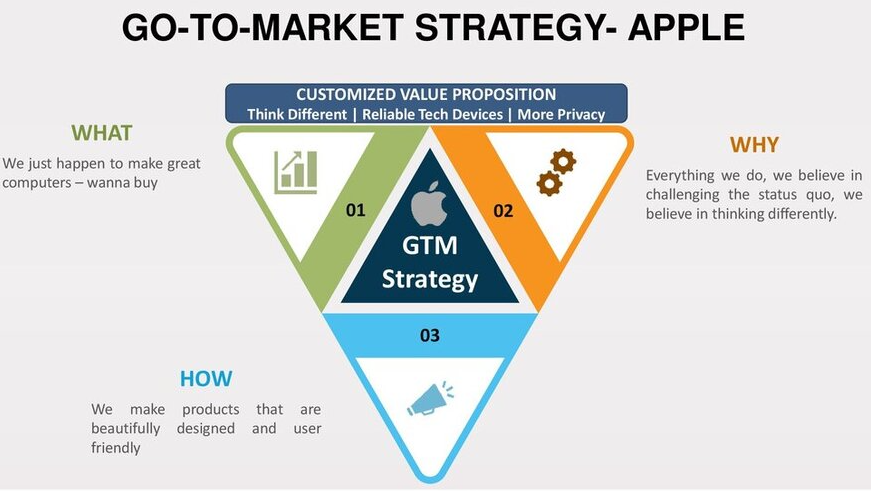The go-to-market (GTM) strategy of an organization is one of the most crucial levers for achieving important business results. A GTM strategy’s fundamental goal is to help a business adapt to the changing needs of its clientele. It is the point at which the business sells to, serves, and engages with its existing clientele as well as engages with potential new consumers. It entails the most strategic inquiries a business can make.

The majority of companies in the for-profit sector want to maximize revenues while minimizing costs and risks. Many businesses are always enhancing and improving their primary business results, and frequently they are searching for a magic solution or at the very least trying to determine the important levers to strengthen their outcomes.
| Content |
| What is Go-to-market strategy? |
| Who requires a go-to-market strategy? |
| What are the various go-to-market strategies? |
| How to create a go-to-market strategy? |
| Go-to-market strategy example |
| Conclusion |
What is Go-to-market (GTM) strategy
In essence, GTM strategies are how a company aligns its offerings with the evolving needs of its customers – they are the interfaces at which customers are served and new prospects are met.
It entails asking the most strategic questions a business can, like:
- What markets do we target?
- Who are our intended customers?
- Which channels work with the way our clients make purchases?
- What channels and markets do our offerings fit into?
- What is our unique value proposition to each target customer?
Key elements of GTM strategy

Who requires a go-to-market strategy?
A GTM strategy is necessary for anyone who runs into one of the following three situations:
- Launching a new product in an existing market
- Launching an existing product in a new market
- Analyzing the potential market for a new product
It is relevant for both individuals and businesses involved in B2B relationships.
What are the various go-to-market strategies?
There are four types of go-to-market strategies.
Inbound
Through inbound marketing strategies like SEO, social media, conversational marketing, and others, inbound GTM strategies essentially aim to draw in the right clients at the right time. Using this approach, you’re counting on the reputation of your brand to raise awareness of your offering.
Sales enablement
GTM strategies for sales enablement focus on the sales team rather than the customer. If your business is young or you’re introducing a product against stiff competition, this is a terrific strategy.
If customers can already find solutions to their problems on the market, they won’t come to you. Instead, you require skilled salespeople who are prepared to use persuasive positioning statements to lead clients through the pipeline.
Account-based marketing (ABM)
ABM (account-based marketing) GTM techniques primarily target high-profile clients and are frequently employed by channel sales businesses. These businesses create products with high-value consumers in mind rather than designing them with the entire public in mind.
Demand generation
The main goal of this GTM strategy is to establish steady demand for your new product. Demand generation typically makes use of outbound marketing strategies like advertising, cold calling, and email marketing. This approach can get you in the public spotlight much more quickly than other strategies if you have a unique product with a very narrow niche.
How to create a go-to-market strategy?
Defining Ideal Customer Profile (ICP)
Your ICP provides a detailed profile of your ideal client. A client who can gain significant benefits from your product or service and who can also provide you with enough value in return for your firm to be profitable.
In order to create your ICP, you must be mindful of:
- Who they are
- Where they work
- What kinds of everyday difficulties they deal with
Competitor research
Understanding what your competitors have to offer and recognizing the benefits they provide might help you market your own product. Start by looking at the reviews of competitors, then narrow your search by pertinent industry sectors.
This will let you to ascertain what your ICP genuinely values and what they find most appealing and unappealing about the platforms of your competitors.
Effective communication
Describing the benefits of your good or service to your ICP in a way that addresses their problems. And speaking their language is a need for being able to achieve this.
Analyze how your competitors’ product offers are positioned on their websites and comprehend all the message they are currently using. This enables you to determine your USP and how to reposition the products of your competitors.
Setting targets
You may calculate the average output and response rates by counting the number of cold calls, emails, and LinkedIn messages sent each day.
Be sure to account for the average opportunity to close rate. By doing so, you’ll be able to create your full-funnel pipeline and lay out the data-driven targets and sales objectives that your salespeople will strive to achieve each month.
You want to use a combination of paid ads and content to find chances for your inbound marketing campaigns. The rationale behind that is that as part of your GTM, you want to diversify and test various strategies.
Deciding your tactics
You need to employ several strategies in unison in order to reach your ICP. These consist of:
Quality data
Your sales team can focus on customers who are most likely to purchase your goods or services with the help of current prospect data.
Marketing strategy
For the top (TOFU), middle (MOFU), and bottom (BOFU) of the funnel, you’ll need various offers. Additionally, each channel will require a different presentation of the offer.
Content
Your efforts to generate inbound leads are driven by content. Do your keyword research before building a content plan to promote your goods or services.
Partnerships
You must enter into significant alliances if you’re entering a new market and have little brand recognition on your own. And doing that will be made easier by finding businesses with comparable ICPs, especially if they are much better known for their brand than you are.
Establishing feedback mechanism
A feedback loop between marketing, sales, and product development will ensure that the most important lessons from your GTM strategy are put into practice.
Go-to-market strategy example
Apple’s products aren’t just phones, laptops, watches, or tablets – it’s a lifestyle, and the company makes sure its customers know this. Apple’s marketing messages emphasize the company’s innovation and intelligence as well as the exclusivity of its products.

This strategy has led to a nearly fanatical interest in the company’s products. Apple seized control of 28% of the US smartphone market right away, and as of right now, that share is over 49%.
Apple’s unique messaging is complemented with direct-to-consumer (DTC) and third-party channel distribution, giving Apple significant control over the customer buying experience.
Conclusion
It’s essential to develop a go-to-market strategy before releasing your new product. With the procedures outlined in this article, you’ll be well on your approach to introducing a good or service that will solve a problem for your potential clients and make money in the market.
At GeopFX, we specialize in the uniquely mixing of sustainable strategy to resoundingly accomplish the objectives of our clients. Say “Hi” to the most adaptable and effective strategy for boosting leads, revenue, and brand authority available if we haven’t already met.


